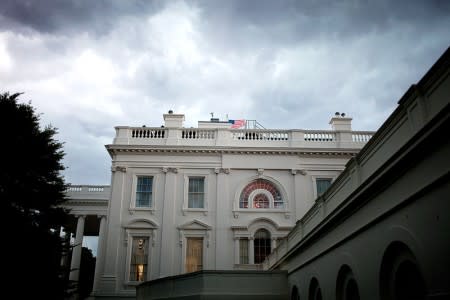Congress, President face a stormy season in September
Congress is gone until September 9, and then the debates should fly as its leaders and President Obama try to avert a government shutdown. Here’s a look a five big items that need to be tackled before real gridlock hits Washington.
It’s going to be a tough month, since Congress has passed few laws this year and its fiscal budget year ends on October 1. That’s inconvenient, since Congress also didn’t approve any government spending beyond then.
With a public already upset with a stalemate that has shut down funding and resulted in painful sequester cuts, the swirling combination September deadlines could put the breaks on the government, as it passes its borrowing limits, and does nothing on key bills related to immigration and agriculture.
So here’s our list of the five biggest to-do items as Washington faces a storm season of deadlines.
1. The debt ceiling. The Bipartisan Policy Center estimates the federal government will hit its $16.7 trillion debt ceiling sometime after mid-October. That would prevent the government from borrowing money and potentially put it in default.
President Barack Obama has made it clear, as a negotiating point, that he wants a debt-ceiling agreement as part of any broader budget deal cut in September. Republicans probably won’t agree, since their ability to approve a debt-ceiling increase is one of the big tools they have to force bigger spending concessions from the Democrats.
2. The sequester. The painful cuts from the sequester, across-the-board government spending cuts that forces layoffs and furloughs of workers, become a longer-term reality if they continue into the next fiscal year, which starts on October 1. For now, a sequester deal seems unlikely as part of a bigger deal about funding the government past September.
The Democrats’ proposed budget eliminates the sequester, while the Republicans keeps it until other spending concession can be wrung from the Democrats.
3. The budget and a government shutdown. The federal government faces a partial or complete shutdown on October 1 if Congress and the President can’t agree on a way to fund government operations. In recent years, Congress has used a six-month continuing resolution to stay in business, rather than a fully approved annual budget.
As of August 12, the major spending bills in Congress weren’t approved and some Republicans still planned to force a government shutdown unless the Executive Branch agreed to stop funding the Affordable Care Act, or Obamacare. However, much of the ACA has already been implemented, and putting the brakes on such a massive program couldn’t happen quickly.
Currently, the sides are about $90 billion to $100 billion apart of a deal to keep the government going beyond September. Add in the politics of the debt ceiling and the sequester, and for now, the odds seem against a deal by October 1st.
4. Immigration reform stuck in limbo. The battle over immigration reform raged all summer in Washington, as politicians from both sides of the aisle took stances on varying laws.
However, with immigration reform facing a steep uphill battle in the House, it’s unlikely to move forward in what is shaping up to be a crazy September.
5. The Farm Bill as a key pawn in the budget battle. The massive 5-year spending plan actually expired last year, but it was extended for one year as part of a compromise. So now a Farm Bill deadline is approaching again.
The Farm Bill includes everything from price supports for farmers to crop insurance to food stamps, and heading into September there still isn’t a conference committee formed to work out differences between the House and the Senate on new legislation.
One scenario is that if Congress can agree on a new Farm Bill, it would be included in the continuing resolution to fund the government after October 1. Another is that Congress would issue another one-year extension of the 2008 Farm Bill, at some point, if a compromise isn’t reached.
So what happens next? NPR recently asked former Democratic and GOP operatives about the impending Congressional storm in late September, and opinions were mixed about a government shutdown.
The overall opinion is that a government shutdown is possible, but it could be brief if a short-term funding deal is reached.
“Could there be a shutdown for a couple of days? Yeah. Long-term, no,” said Ted DeHaven from the Cato Institute.
“You can imagine they’ll do a one- or two-month punt CR, but at that point, I don’t think anyone has a good idea how the debt ceiling is handled,” said Chris Krueger from the Guggenheim Securities.
That scenario pushes the gridlock into December, one year after the media launched its own feeding frenzy over the fiscal cliff.
Recent Constitution Daily Stories
Five little-known men who almost became president
Two students keep winning cancer bracelet battle in courts


